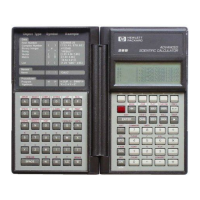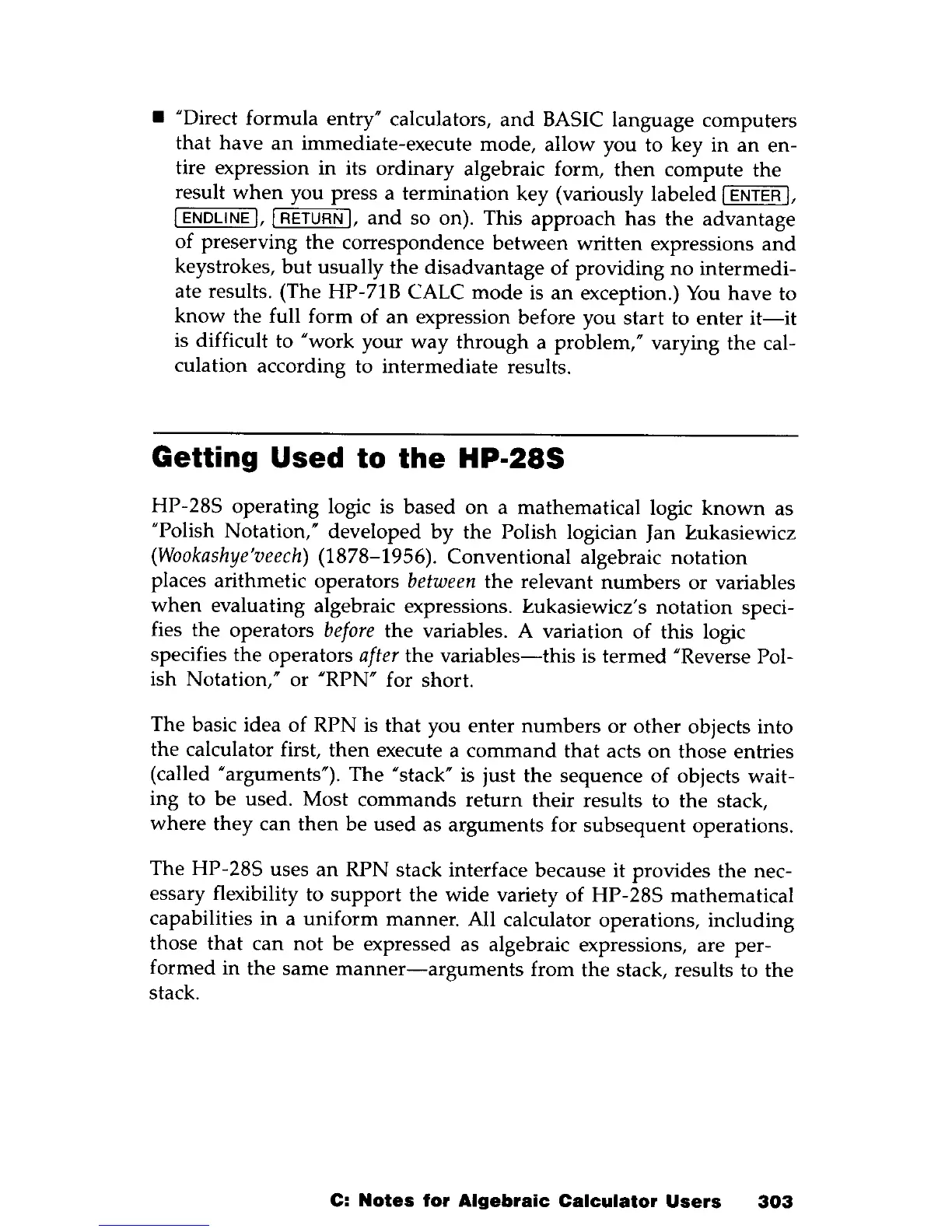•
HDirect
formula entry" calculators,
and
BASIC language computers
that
have
an
immediate-execute mode, allow you to key in
an
en-
tire expression in its ordinary algebraic form,
then
compute
the
result
when
you press a termination key (variously labeled I ENTER
I,
I ENDLINE
I,
I RETURN
I,
and
so on). This
approach
has
the
advantage
of preserving
the
correspondence between written expressions
and
keystrokes,
but
usually
the
disadvantage of providing
no
intermedi-
ate results. (The HP-71B CALC
mode
is
an
exception.)
You
have
to
know
the full form of
an
expression before you
start
to
enter
it-it
is difficult to
Hwork
your
way
through
a problem," varying
the
cal-
culation according to intermediate results.
Getting Used to
the
HP-28S
HP-28S operating logic is
based
on
a mathematical logic
known
as
HPolish
Notation," developed
by
the Polish logician Jan
~ukasiewicz
(Wookashye'veech)
(1878-1956). Conventional algebraic
notation
places arithmetic operators
between
the relevant
numbers
or variables
when
evaluating algebraic expressions.
~ukasiewicz's
notation
speci-
fies
the
operators
before
the variables. A variation of this logic
specifies
the
operators after
the
variables-this
is
termed
HReverse
Pol-
ish Notation," or
HRPN"
for short.
The basic idea of RPN is
that
you
enter
numbers
or
other
objects into
the calculator first,
then
execute a
command
that
acts
on
those entries
(called Harguments"). The
Hstack"
is just the sequence of objects wait-
ing to
be
used. Most commands
return
their results to the stack,
where
they can
then
be
used
as arguments for subsequent operations.
The HP-28S uses
an
RPN stack interface because
it
provides the nec-
essary flexibility to
support
the
wide variety of HP-28S mathematical
capabilities in a
uniform
manner. All calculator operations, including
those
that
can
not
be
expressed as algebraic expressions, are per-
formed in the same
manner-arguments
from the stack, results to
the
stack.
C:
Notes
for
Algebraic
Calculator
Users
303

